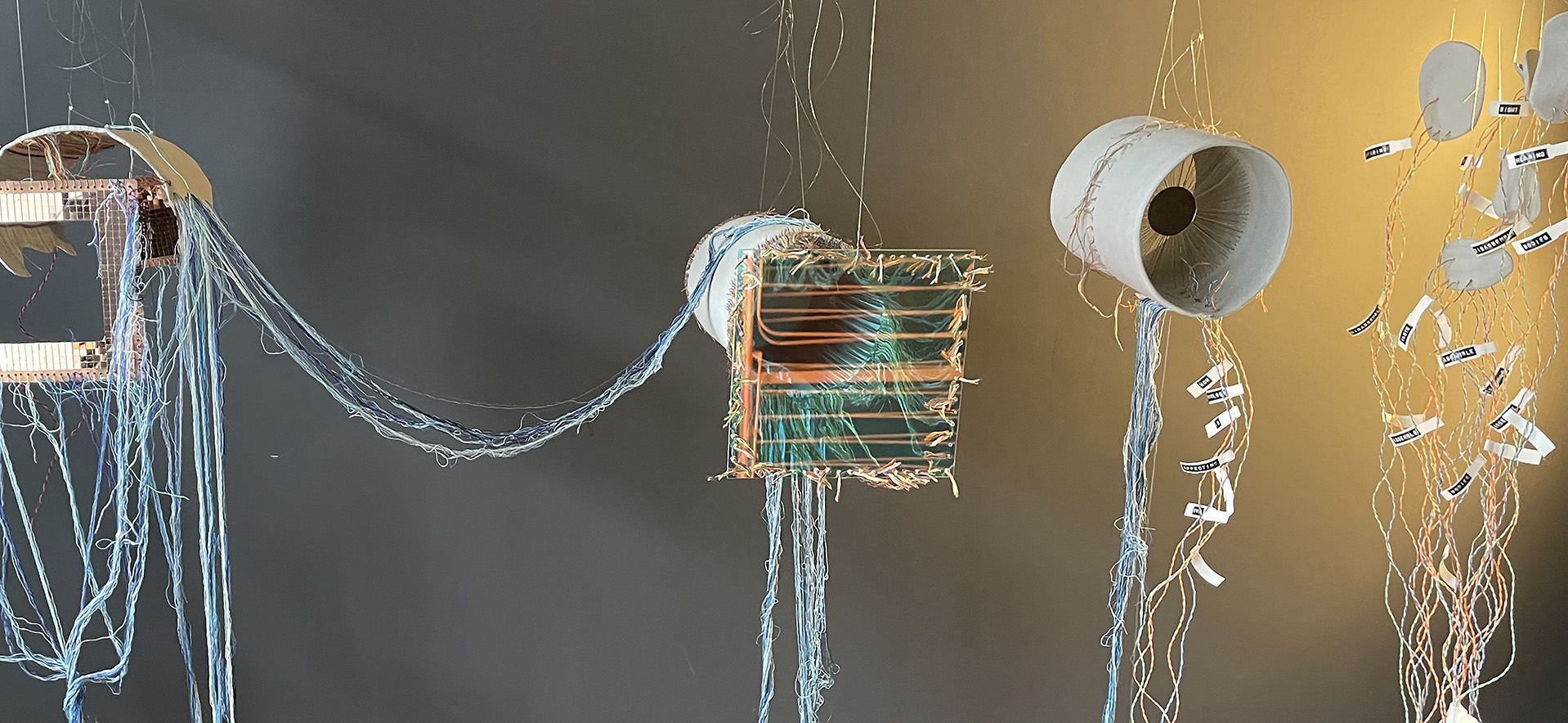How do digital technologies impact bodily perceptions? This installation explores the technological body as an extension of ourselves, highlighting its often-ignored presence and its subtle influence on our perception and interaction with the world.
Luiza Botner's installation delves into the intricate relationship between technology, the human body, and sensory perception. As an art-based researcher, Luiza's work bridges theoretical insights with practical explorations.
Her work prompts the public to reflect on how their senses shape their understanding of space, time, and reality. Using a methodological process of collage, she developed a concept of “assemble to disassemble.”
The installation itself symbolizes the "technological body", comprised of electrical cables, ceramics, metals, and plastics. It facilitates interactions that seem magical, though they are rooted in physical components. Submerged under the ocean of time, blue threads connect the objects, representing their extension and survival. Fragile yet enduring ceramics form the sculpture's core, highlighting the connection to the earth and demonstrating how entities can be broken and reshaped.
This installation captures the intricate and interconnected nature of the technological body and its impact on our perceptions. It seeks to draw the viewer's attention to a technological body present in our daily lives but often ignored, as a moment of alienation. It acts as a visual manifesto about technology as an extension of our body, subtly altering how we perceive and interact with the world.
Luiza's project addresses technological impacts, unpacking how modernity has prioritized vision and hearing while underestimating the multi-sensorial experiences of our surroundings. Inspired by Donna Haraway's cyborg manifesto, she engages with theoretical frameworks that inform her creative endeavors, striving for more holistic artistic research.





